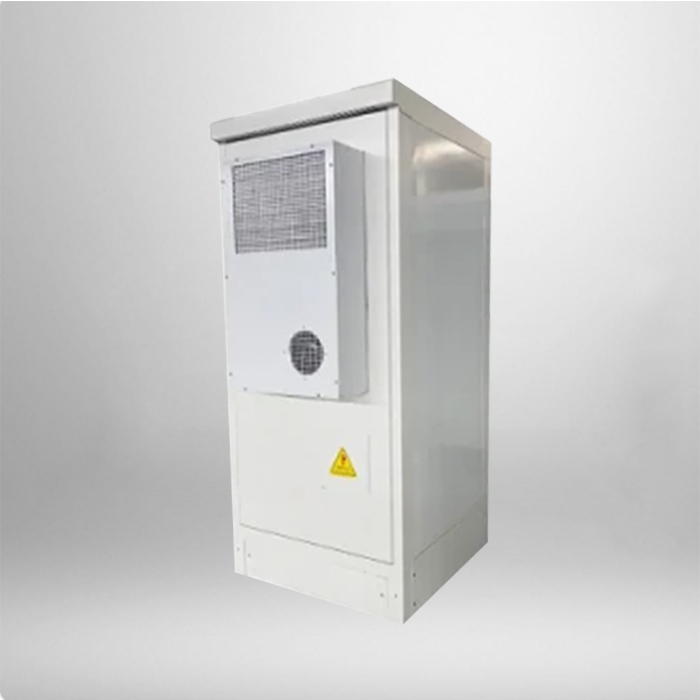
Abstract: This paper discusses the key considerations when choosing an outdoor telecom cabinet. It analyzes various factors such as thermal performance, structural design, battery technology, condensation prevention, and more. By understanding these considerations, telecom operators and stakeholders can make informed decisions when selecting the most suitable outdoor telecom cabinet for their specific needs.
Introduction
Outdoor telecom cabinets play a crucial role in the telecommunications industry. They house and protect sensitive electronic equipment from adverse environmental conditions. Choosing the right outdoor telecom cabinet is essential to ensure the reliable operation of telecommunications networks. This paper examines the key considerations that should be taken into account when making this decision.
I. Thermal Performance
One of the primary considerations when choosing an outdoor telecom cabinet is its thermal performance. The cabinet should be able to maintain an indoor air temperature below 55°C to avoid exceeding the maximum operating temperature of the electronic equipment. The use of computational tools like DesignBuilder can help analyze the thermal performance of a cabinet. Numerical studies have shown that mechanical ventilation can be effective in extracting heat generated inside the cabinet. However, there is a limit beyond which increasing the air flow rate does not significantly decrease the cabinet air temperature. The radiant properties and geographical location of the cabinet also play an important role. High values of the outer surface cabinet emissivity can impair the thermal performance during the day. For some locations, an operational mechanical ventilation system may not be enough to maintain the indoor air temperature below 55°C.
II. Structural Design
The structural design of an outdoor telecom cabinet is another important consideration. Cabinets need to be optimized to better adapt to environmental changes. They should be designed to be safe, reliable, and durable. For example, companies like Xuji Electric Co., Ltd. have analyzed and researched the structural optimization design of outdoor cabinets to meet the high requirements of users. Outdoor communication integrated cabinets can integrate power equipment, communication equipment, temperature control systems, lighting systems, and dynamic environment detection systems to replace traditional base station rooms. They have advantages such as small floor area, fast station construction, low cost, and low energy consumption.
III. Battery Technology
The choice of battery technology for an outdoor telecom cabinet is also crucial. Over the last 10 years, Ni-Cd batteries have made their way into outdoor cabinets due to their reliability, long life, and reduced operating costs. The new state-of-the-art Ni-Cd battery maintains the flooded design principle but has significantly increased energy density and reduced water consumption, allowing maintenance-free operation over its life. It fits most outdoor cabinet designs and can provide 40% to 80% more capacity in the same volume compared to legacy Ni-Cd batteries. Sustainability is an important aspect of battery development, and a life-cycle environmental assessment should be considered.
IV. Condensation Prevention
Condensation in outdoor telecom cabinets can affect the operation of equipment and lead to corrosion. To prevent condensation, the temperature and humidity distribution inside the cabinet should be investigated. Insulation can be used to improve air temperature, reduce relative humidity, and prevent condensation. Simulations have shown that increasing insulation can reduce the relative humidity from 85.5% to 80%, meeting the European standard of telecommunication series ETSI EN 300 019-1-3. In practice, enhancing the insulation of the cabinet is an effective anti-moisture method.
V. Monitoring and Warning Systems
Outdoor telecom cabinets should be equipped with monitoring and warning systems to detect potential problems. For example, an outdoor cabinet for a communication system can be equipped with a water-logging warning module connected to an externally-connected monitoring center. When water enters or submerges the module, it can send a warning signal to the monitoring center, informing them to repair the cabinet and protecting the communication device.
VI. Considerations for Outdoor Environment
Outdoor cabinets are subject to various environmental conditions such as climate, biological, chemical, mechanical, and electromagnetic factors. When designing an outdoor cabinet, considerations should be given to factors such as size, sealing, temperature and humidity control, electromagnetic shielding, material selection, and surface coating. These factors can ensure that the cabinet can meet the demands of outdoor work.
Conclusion
In conclusion, choosing an outdoor telecom cabinet requires careful consideration of multiple factors. Thermal performance, structural design, battery technology, condensation prevention, monitoring and warning systems, and considerations for the outdoor environment are all important aspects to take into account. By evaluating these factors and making informed decisions, telecom operators and stakeholders can select the most suitable outdoor telecom cabinet for their specific needs, ensuring the reliable operation of telecommunications networks.


